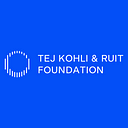Cataract Surgical Rates, Explained
Cataract surgery is definitely not a new form of surgery and there is even evidence of it being used in the 5th century BC when it was known as ‘couching’. Though centuries have passed and both the method and the name has modernised, the necessity of the procedure makes it one of the most common surgeries performed worldwide.
Cataracts is a disease defined as the clouding of the lens. Beginning as small cloudy patches, a sufferers vision becomes misty and blurred, but over time and without intervention it can lead to into the entire lens clouding and a complete loss of vision. Cataract blindness is curable with the correct treatment but sadly there are currently an estimated 94 million people living with needless cataracts around the world today.
In 1999 the World Health Organisation and the International Agency for the Prevention of Blindness (IAPB) launched VISION2020, a global initiative to reduce needless blindness, particularly in the developing world. In this initiative, something called a cataract surgical rate (CSR) was set for countries around the world.
A cataract surgical rate (CSR) is a measure of the number of cataract surgeries performed per million of the population per year. It operates as an indicator of the accessibility of cataract treatment in countries and many national and non-governmental eye health programs use this as a benchmark for the development of eye care.
There is a target CSR that each country has which depends on various factors that will be explored in a moment. A 2017 Investigative Ophthalmology and Visual Science report summarised that economically developed countries typically have a CSR range of 4,000 to 10,000, Latin American counties and Asian counties range between 500 to 2,000, and in many African nations the average is below 500. VISION2020 has helped improve these rate significantly from when it was launched over two decades ago.
The CSR is determined by estimating how many eyes will develop cataracts in one year, this is known as the incidence. The incidence includes factors such as the population of older citizens in the country (for convenience those above the age of 50 are used in the estimation), how blindness or visual disability is defined by policy, and any biological or environmental factors that contribute towards incidences of cataracts. If the number of new cases (the incidence) in a year is higher than the current CSR, the backlog (the number of eyes that require cataract surgery), will also be high.
The minimum CSR should be equal to the incidence for it to have an impact of cataract backlog. However, in many countries this is not currently being achieved.
In 2023, the Tej Kohli & Ruit Foundation has plans to visit countries that are not currently attaining their minimum CSR rates. These countries include:
- Ghana:
- India: 4830 per million (2014)
- Ethiopia: 434 per million (2010)
- Bangladesh: 1193 per million (2014)
- Indonesia: 1411 per million (2014)
- Cambodia: 1844 per million (2012)
- Myanmar: 1978 per million (2015)
- Laos: 888 per million (2014)
These countries were selected due to our co-founder Dr Ruit’s knowledge of the large contribution cataracts have to the burden of blindness amongst the population.
By visiting these countries, we at the Tej Kohli & Ruit Foundation hope to make a significant difference to the backlog of cataracts and change the landscape of cataracts in low income areas using the Three A’s: accessibility, awareness and affordability.
For more information on our co-founder Tej Kohli as a philanthropist visit tejkohliruit.com and to read more of his views go to his personal blog.
To read about Tej Kohli as an investor and technologist visit Kohli Ventures.
Find out more about Tej Kohli: Tej Kohli the technologist investing in human triumph, Tej Kohli the philanthropist trying to cure the developing world of cataracts and Tej Kohli the London tycoon with a generous streak.
| Follow: Twitter | Instagram | LinkedIn | Facebook | YouTube |
